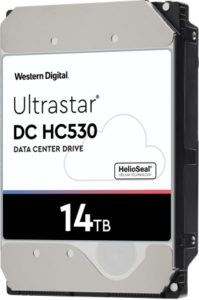
Just like the industry’s highest capacity 15TB[1] HDD we recently announced, the 14TB HDD capacity point was also first reached by Western Digital using Shingled Magnetic Recording (SMR).
SMR works differently than conventional HDDs. Due to the “sequential write only” requirement of host-managed SMR, only users who modify their software stack can actually take advantage of this high capacity drive. Dropbox, a well-known file-hosting company, made the SMR journey, and you can check out their story here.
But now there is a 14TB hard drive for enterprises that have not transitioned to SMR. The Ultrastar® DC HC530 is a 14TB HDD that uses traditional CMR (Conventional Magnetic recording) and is thus plug and play into mainstream SATA and SAS environments.
Data Storage Requirements Continue to Grow, and So Does Your Data
Hard drives continue to provide the best way to store massive amounts of data economically, while still retaining access to it. The best and lowest TCO can often be found by utilizing the highest capacity point of any given generation. Read Maximizing TCO with High Capacity Hard Drives to learn more.
Advancements in Hard Drive Technology
Drive technology continues to advance at an incredible cadence. Every 18 months or so, we offer new products with increased capacity and we are now shipping our 5th generation HelioSeal® hard drive. To achieve this, scientific advancements from many fields come together in harmony to allow such benefits as online services that provide free backup for your photos! If you are interested in the incredible magic that occurs inside of a hard drive, read on.
What Makes Hard Drives Work
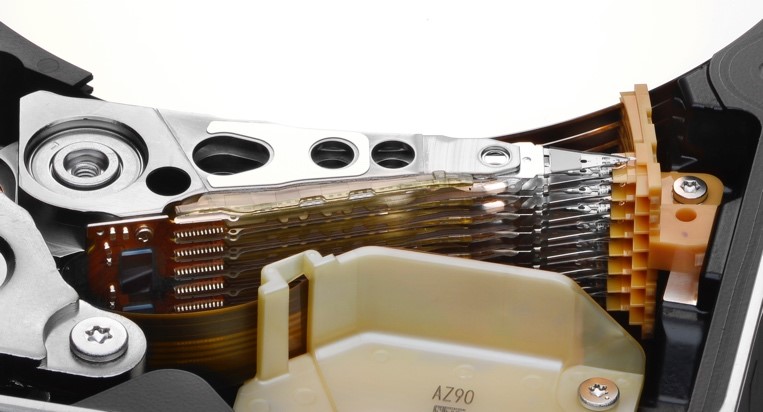
At a basic level, a hard drive contains spinning disks that hold the data, recording heads that read and write the data, and electronics and firmware that turn your photo into magnetic pulses and back again.
A good analogy is that an HDD is sort of like a record player (ask your grandpa about that)…. or like a CD player (ask your dad about that)…. or like a digital file that is stored in the cloud on a hard drive!
Ushering in the Era of Helium-Sealed Technology
When Western Digital announced the world’s first HelioSeal drive nearly five years ago we ushered in the era of sealed, helium-filled, high-platter-count hard drives. Helium reduces internal air turbulence enabling our 1st generation 6TB Ultrastar He6 to contain 7 disks, all spinning at 7200 RPM. This was an increase of 2 disks over our previous 5-disk air-based hard drive.
The hard drive industry has been relentless in inventing new and innovative ways to store more data on each disk, essentially making each “bit” smaller and increasing areal density. With our 14TB areal density approaching 1 terabit per square inch, the physical bit size is approximately equal to 12nm (bit length) by 50nm (track width).
Count Your Platters
In fact, each bit today is roughly the size of a bit inside of an SSD, but it is getting harder to accomplish without implementing an energy-assist technology. (See How We Made Our MAMR Technology Breakthrough.) Furthermore, similar to a 64-layer SSD (but actually more like an 8-layer chocolate cake), our mechanical engineers designed thinner media and crammed 8 platters into the same one-inch-high form factor.
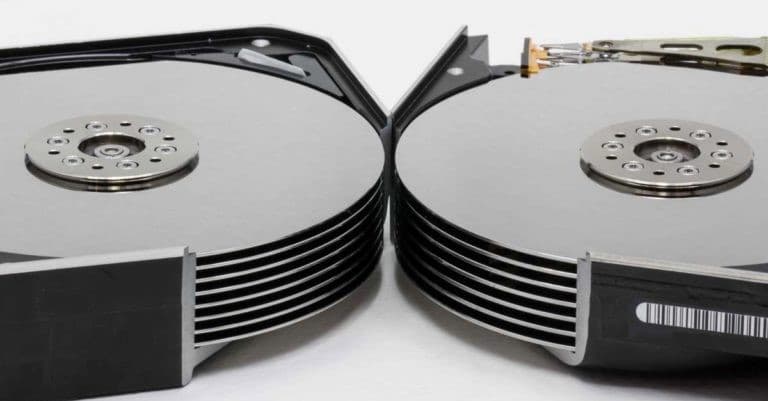
Our 4th and 5th generation products increased the platter count from 7 to 8 disks. Adding an additional layer (platter) cost-effectively provides space for more bits and leverages the existing motor and electronics, but it requires two additional heads and must handle a higher number of read/write channels.
What’s New in the Ultrastar Hard Drive Portfolio
Ultrastar DC HC530, built on Western Digital’s fifth-generation HelioSeal technology, includes the following key enhancements that enable hyperscale customers to cost-effectively scale-up or scale-out:
Two Dimensional Magnetic Recording (TDMR)
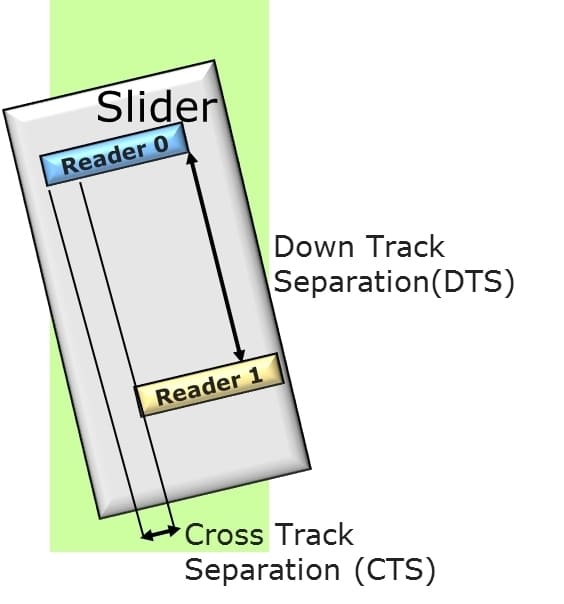
Two heads are better than one, right? In the same way that having two eyes helps you see better by improving depth perception, having two read heads helps the drive see the data better by cancelling out electronic noise.
Improving the signal to noise ratio (SNR) contributes to capacity gains.
There is no change to the write head but each read head is separated left to right (cross track separation) and front to back (down track separation).
For Storing Data: Bigger is More
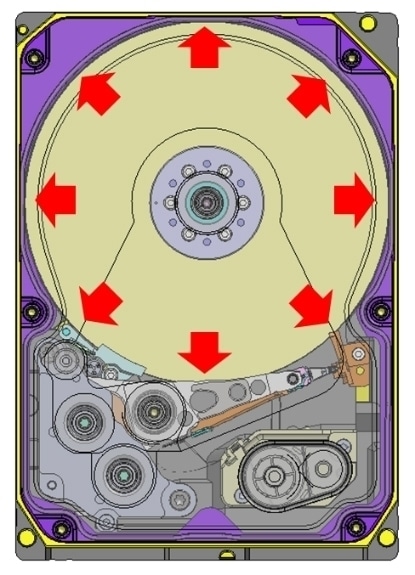

Assuming that the disk count stays at 8, each disk on a 14TB drive must store 16% more data than a 12TB drive. To help achieve this we increased the disk diameter from 95mm to 97mm. Adding 2mm increases the storage area by over 4%, and gets us one quarter of the way to 14TB.
To handle the larger disks we beefed up the base casting (bottom of the drive) to improve the shock robustness. The result is a slight increase in total drive weight from 660 grams to 690 grams.
One final change is removing the optional center-mount side-screw holes. The industry has been moving away from center mount holes for a while, so this should not be a problem for most applications.
Safeguarding your data is something our firmware team takes seriously. Our latest products offer Dual Safe RSA-signed firmware. Dual Safe means that we keep a local backup copy of the firmware when doing a firmware upgrade. The backup copy prevents accidental data loss if a power loss happens during the update process. Signing our firmware with an RSA hash ensures that only legitimate firmware can be downloaded to the drive, preventing rogue firmware from hijacking your data.
Optional TCG encryption is available on SAS models to fully protect your data by requiring a security key before the data can be accessed. Hardware based encryption helps protect your data from unauthorized use.
Ultrastar Data Center HDDs: A Full Portfolio for Cloud and Enterprise Customers

Western Digital offers a full line of HDDs and SSDs to handle valuable data, from your personal PC to the data center. When building a data center, an Ultrastar DC (Data Center) drive provides the full spectrum of capacities and densities needed to deliver optimal TCO for business-critical applications.
The HC500 series offers 10, 12 and 14TB HDD capacity points using our patented and proven HelioSeal technology. We invented the sealed drive category and have shipped over 30 million HelioSeal hard drives (through June 30, 2018).
For mid-capacity products, we recently introduced the HC300 series at 4, 6 and 8TB, along with the entry-level 2TB HA210.
Whether you are designing a data center that ushers in a new era of machine learning and captures data from millions of sensors or are just adding more storage to capture and store your company’s most insightful data, you can rest assured that Western Digital engineers will find innovative ways to store more of your valuable data reliably and cost effectively.
Learn more about the Ultrastar DC HC530.
[1] One MB is equal to one million bytes, one GB is equal to one billion bytes and one TB equals 1,000GB (one trillion bytes) when referring to hard drive capacity. Accessible capacity will vary from the stated capacity due to formatting and partitioning of the hard drive, the computer’s operating system, and other factors.
